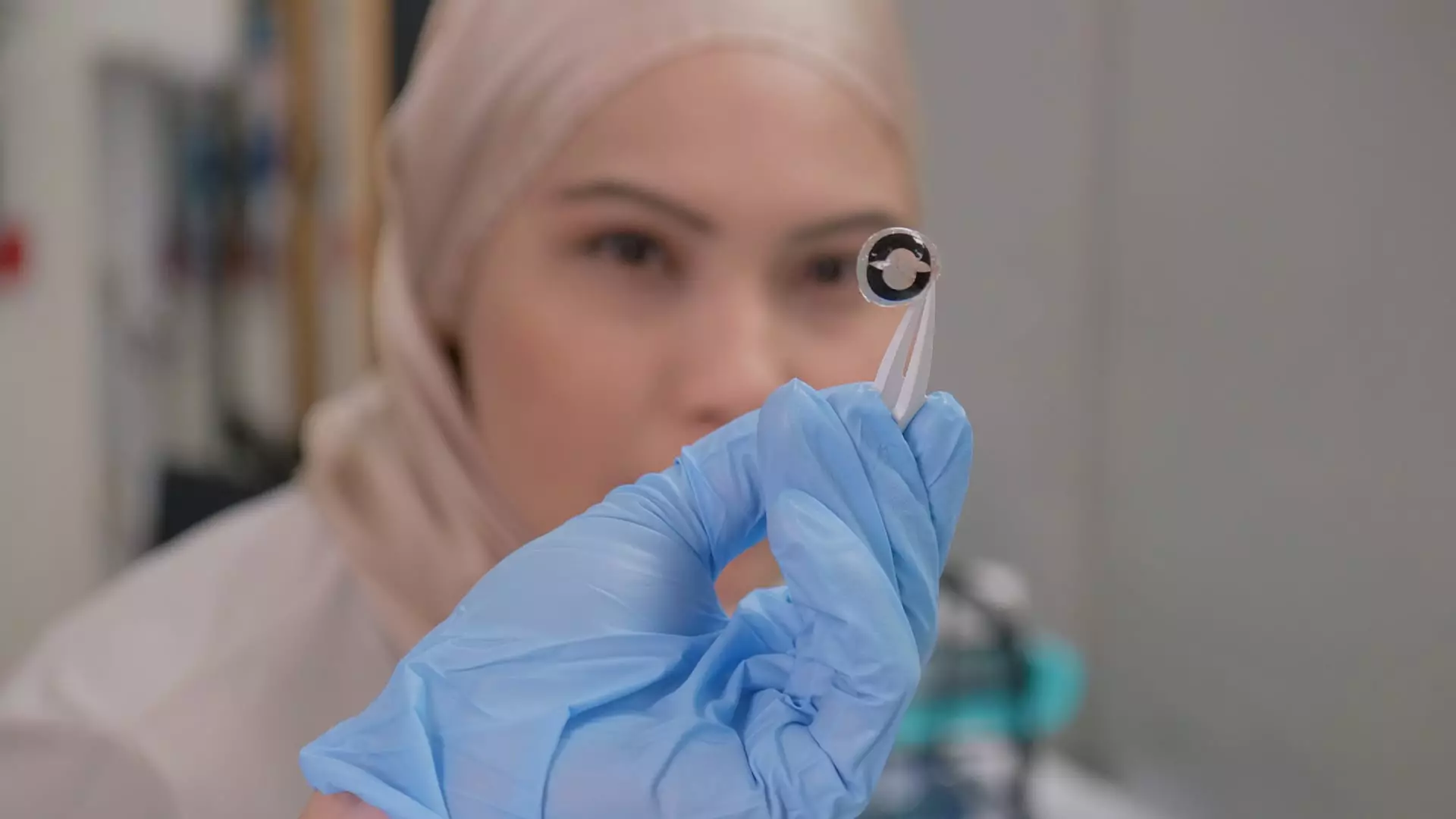The inspiration for the latest invention in battery technology for smart contact lenses came from an unexpected source – a scene from a “Mission Impossible” movie. Scientist Lee Seok Woo was captivated by the idea of contact lenses capable of facial recognition and eye tracking. This scene fueled his desire to make this technology a reality and led to the development of innovative batteries for smart contact lenses.
Lee’s background in battery components provided him with the necessary foundation to venture into the world of wearable technology. Recognizing the need for safe and compact batteries for smart contact lenses, Lee and his team set out to create batteries that would be thin enough to fit comfortably in the lenses while still providing sufficient power. The batteries they developed are approximately 0.2 mm in thickness, making them twice as thin as a human hair.
One of the most groundbreaking aspects of these batteries is their ability to be powered using a biocompatible saline solution instead of traditional lithium-ion batteries. This innovative approach eliminates the need for flammable materials in the batteries and opens up new possibilities for sustainable power sources. By coating the batteries with glucose and immersing them in a saline solution, the batteries can be charged either chemically or through conventional wire methods.
The Power of Tears
An intriguing feature of these smart contact lens batteries is their ability to be charged by tears. As tears contain glucose, wearing the contact lenses allows for a continual charging of the batteries. Lee humorously commented, “If you cry more, then you can charge your battery more.” This unique charging method exemplifies the level of creativity and ingenuity that went into developing these batteries.
While the current capacity and voltage of the batteries are still relatively low compared to traditional batteries, the research team is actively working to enhance the performance of these batteries. At present, the batteries can only produce a voltage of 0.3V – 0.6V, which is insufficient for powering data storage or internet connectivity. However, Lee and his team are optimistic about the future prospects of this technology, particularly in the realm of healthcare.
Exploring Healthcare Applications
One of the potential applications for smart contact lenses equipped with these innovative batteries is in the healthcare sector. By utilizing glucose as a biofuel, these lenses could potentially be used to monitor glucose levels in diabetic patients. Lee envisions a future where users can seamlessly monitor their glucose levels while wearing the contact lenses, offering a new level of convenience and accessibility in healthcare monitoring.
Despite the groundbreaking nature of this invention, Lee emphasizes the importance of keeping costs low in order to maximize the accessibility of this technology. While the potential applications are vast and promising, Lee recognizes the importance of ensuring that the batteries remain affordable and practical for a wide range of users.
The development of batteries for smart contact lenses represents a significant step forward in the field of wearable technology. Through creativity, innovation, and a focus on practical applications, Lee Seok Woo and his team have brought this futuristic technology one step closer to reality. As further advancements are made in battery technology, the possibilities for smart contact lenses and other wearable devices are truly endless.


Leave a Reply